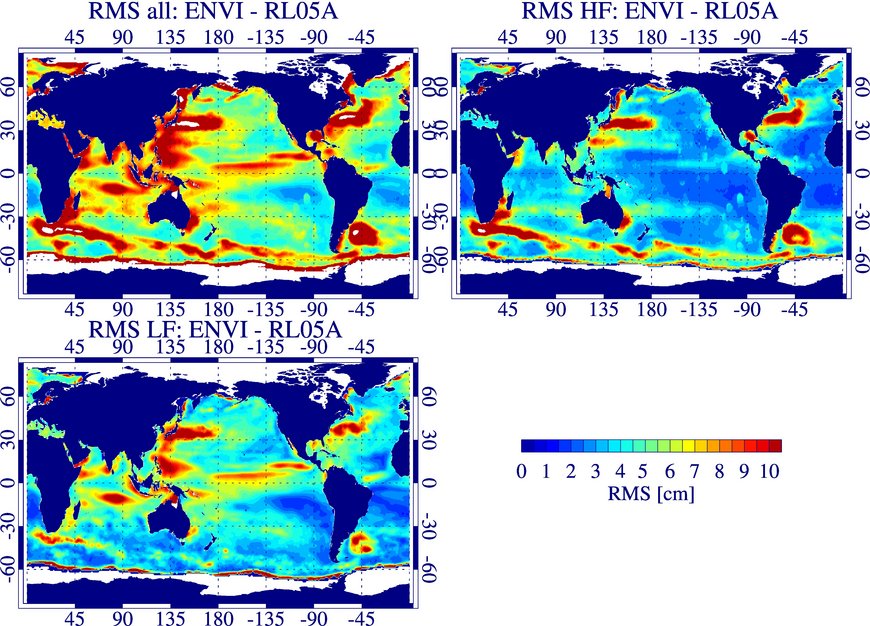High-frequency sea level from altimetry for the validation of GRACE ocean dealiasing products
Satellite altimeter data has been commonly used for the validation of ocean circulation models. At GFZ high frequency oceanic mass variations are modeled based on GFZ’s Ocean Model for Circulation and Tides (OMCT) for the dealiasing of GRACE measurements (AOD1B). The new version of the dealiasing product (RL05) has been validated by Jason-1 and ENVISAT altimeter data processed by the ADS system.
The along-track altimeter data for the period 2003 to 2008 is corrected for the effect of sea level pressure variations by a combination of the 6-hourly ocean mass variations estimated by two releases of the OMCT-model (RL04 and RL05) and an inverse barometer effect. This data is co-linearly analysed and mapped on daily 1x1 degree grids afterwards. To extract the high-frequency signals a butterworth-filter with a cut-off period of 30 days has been applied to the daily grids. RL05 oceanic mass data shows improvement relative to the RL04 data for the high-frequency component based on Jason-1 and Envisat data for most open ocean areas. The improvement is especially clear in the Southern Ocean and the Northern North Atlantic.
RMS of sea level from Envisat (2003 to 2008)

Dobslaw, H., Flechtner, F., Bergmann-Wolf, I., Dahle, C., Dill, R., Esselborn, S., Sasgen, I., Thomas, M. (2013): Simulating high-frequency atmosphere-ocean mass variability for dealiasing of satellite gravity observations: AOD1B RL05. J. Geophys. Res. Oceans 118:3704–3711, doi:10.1002/jgrc.20271
Zenner, L., Bergmann-Wolf, I., Dobslaw, H., Gruber, T., Güntner, A., Wattenbach, M., Esselborn, S., Dill, R. (2014): Comparison of Daily GRACE Gravity Field and Numerical Water Storage Models for De-aliasing of Satellite Gravimetry Observations. Surv. Geophys. 1–1, doi: 10.1007/s10712-014-9295-x


